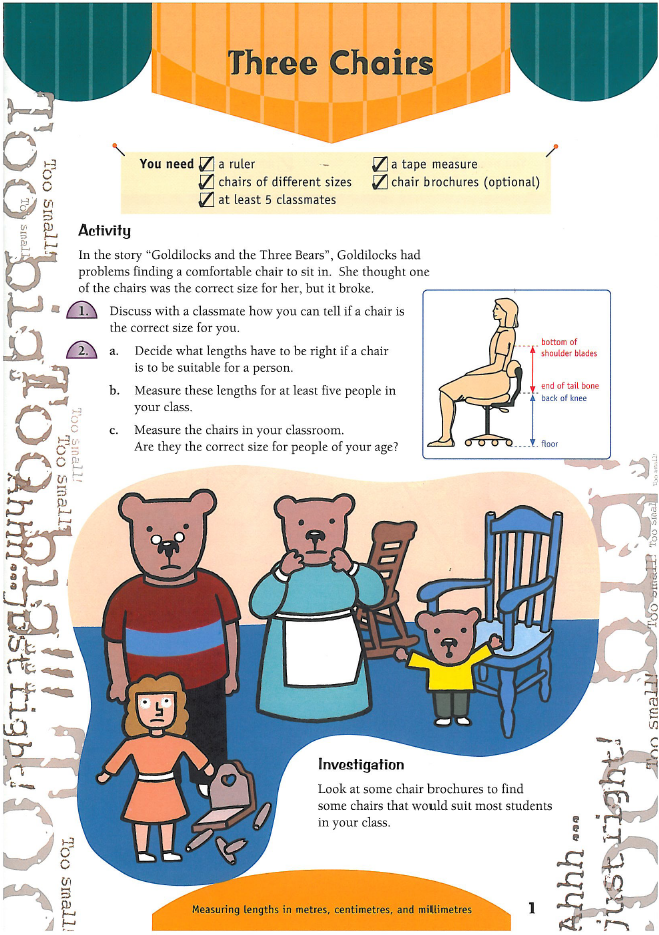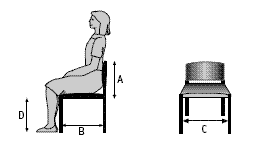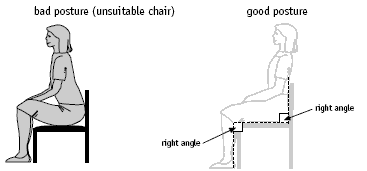This is a level 3 measurement strand activity from the Figure It Out series.
A PDF of the student activity is included.
Click on the image to enlarge it. Click again to close. Download PDF (513KB)
tape measure
ruler
FIO, Level 3, Measurement, Three Chairs, page 1
chair brochures (optional)
at least 3 classmates
This activity provides an opportunity for some purposeful measurement of length in a problem-solving context. It is particularly useful for measuring in millimetres, converting from millimetres to centimetres and metres, developing skills using a ruler or tape measure, and understanding the right angle.
You could read aloud or have available the story of Goldilocks and the three bears as an introduction to this activity.
There are four lengths worth considering: the height of the back of the chair (A), the length of the seat (B), the width of the seat (C), and the height of the seat above the floor (D). The most important of these is probably D, the height of the seat above the floor, as it affects the angles at which a person sits.
When students measure these lengths for the five people, be sensitive to anybody who shows signs of discomfort with the measurement process. It might help to measure the B and C lengths by placing a piece of large paper on a chair and sitting the student who is to be measured on the paper. The student could then mark the two lengths on the paper themselves and take their measurements from the marks
on the paper.
Take the opportunity to discuss correct posture when sitting at a desk. This could be extended to include the correct arm and head positions for working on a computer. Discuss the ideal angle between lengths A and B and lengths B and D (in each case, a right angle).
Discuss the reasons why only a small number of chair sizes are available for classes. You could explain the impracticality of continually replacing chairs as students grow. A useful way of deciding an appropriate range of chair sizes would be to plot a stem-and-leaf graph (see Mathematics in the New Zealand Curriculum, page 216) for everyone in the class for the lengths B, C, and D.
Investigation
The school office probably has some brochures from suppliers of school furniture that show the sizes of class chairs available for purchase.
Answers to Activity
1. Answers will vary.
2. a. Answers will vary, but the important parts to think about are the length of the person’s back, the length of their legs, and the width of their bottom.
b.–c. Answers will vary.
Investigation
Answers will vary.


